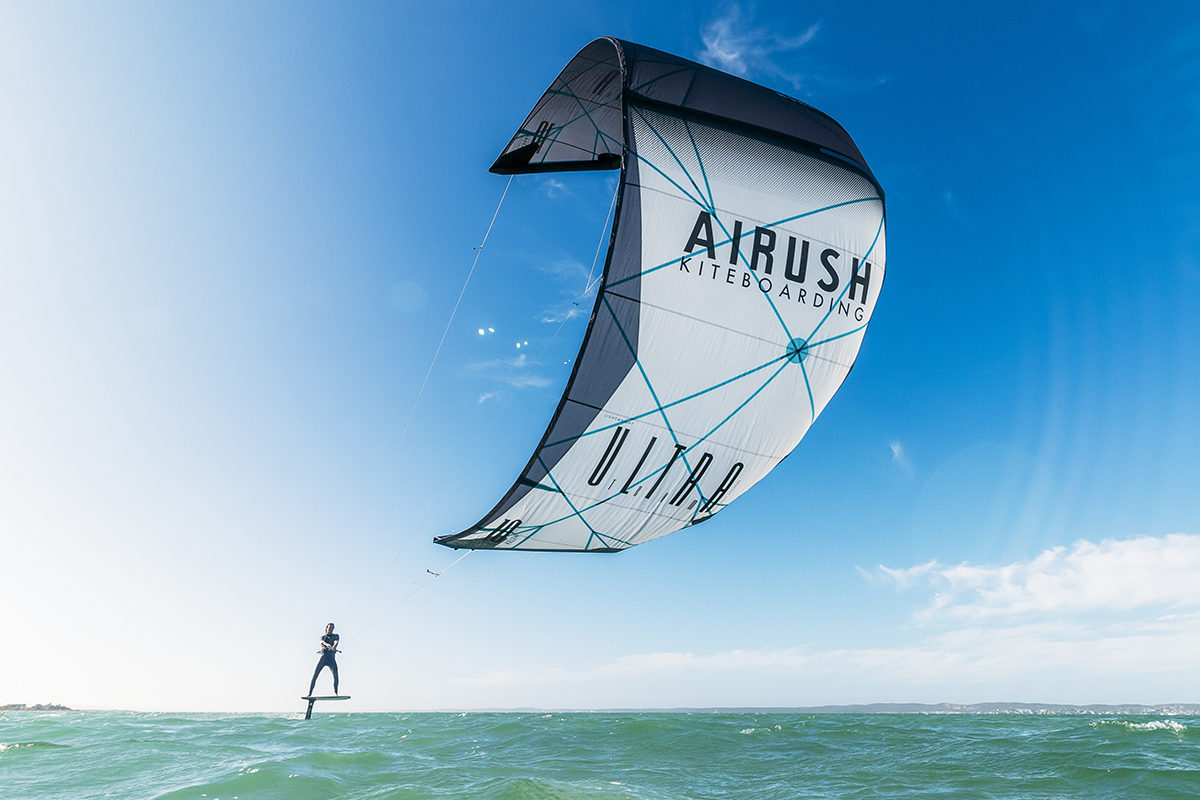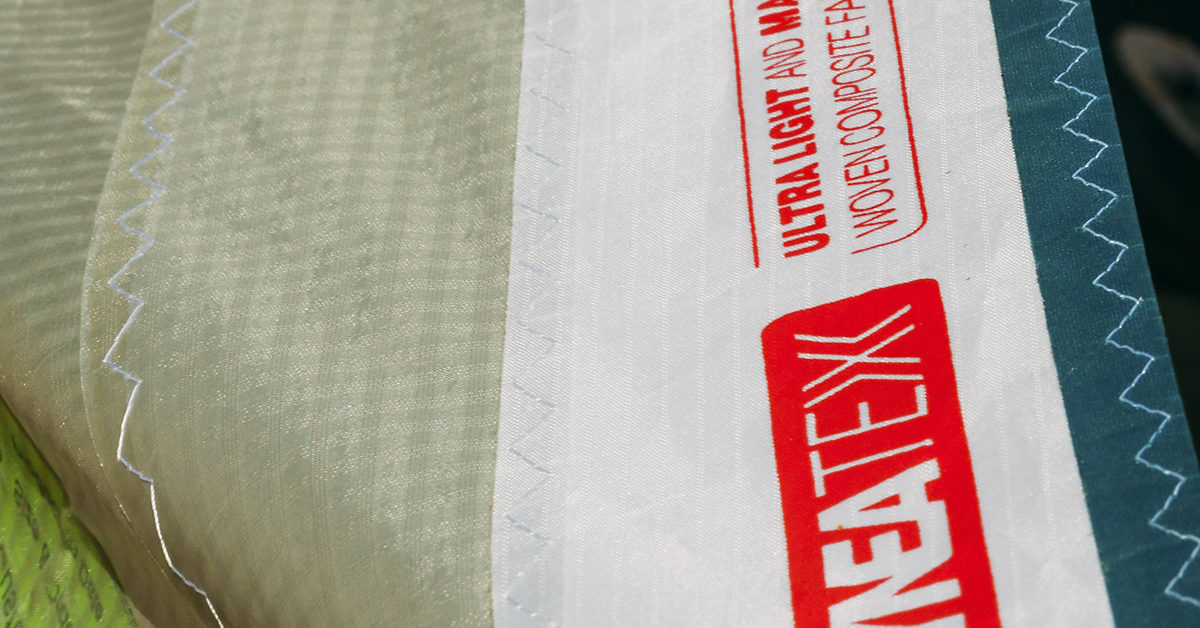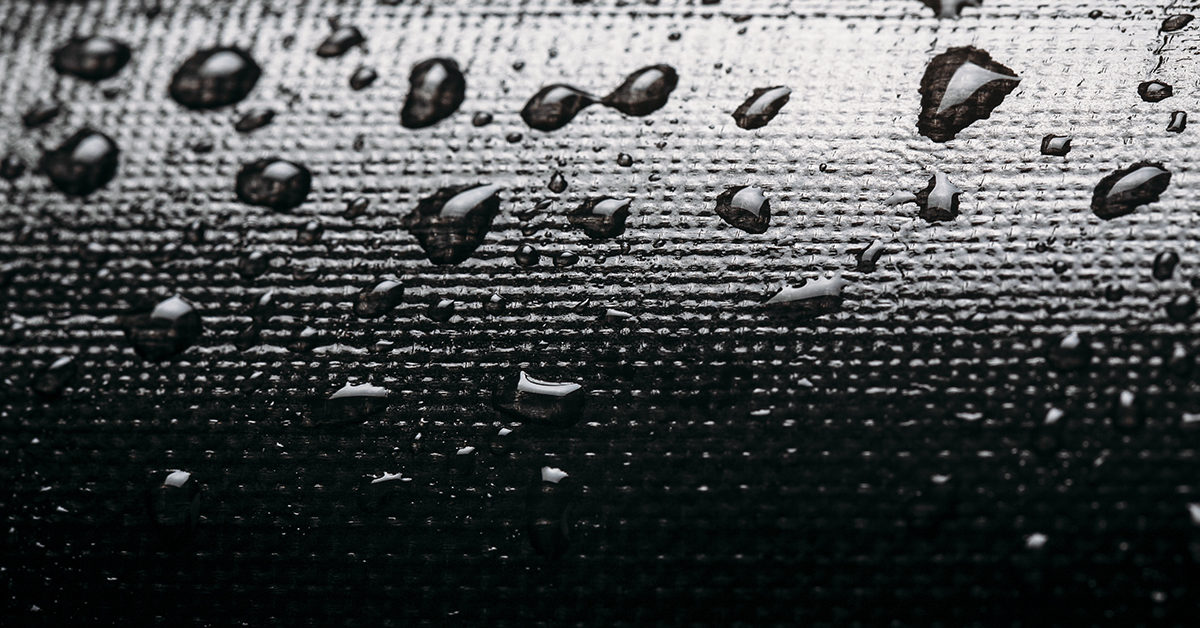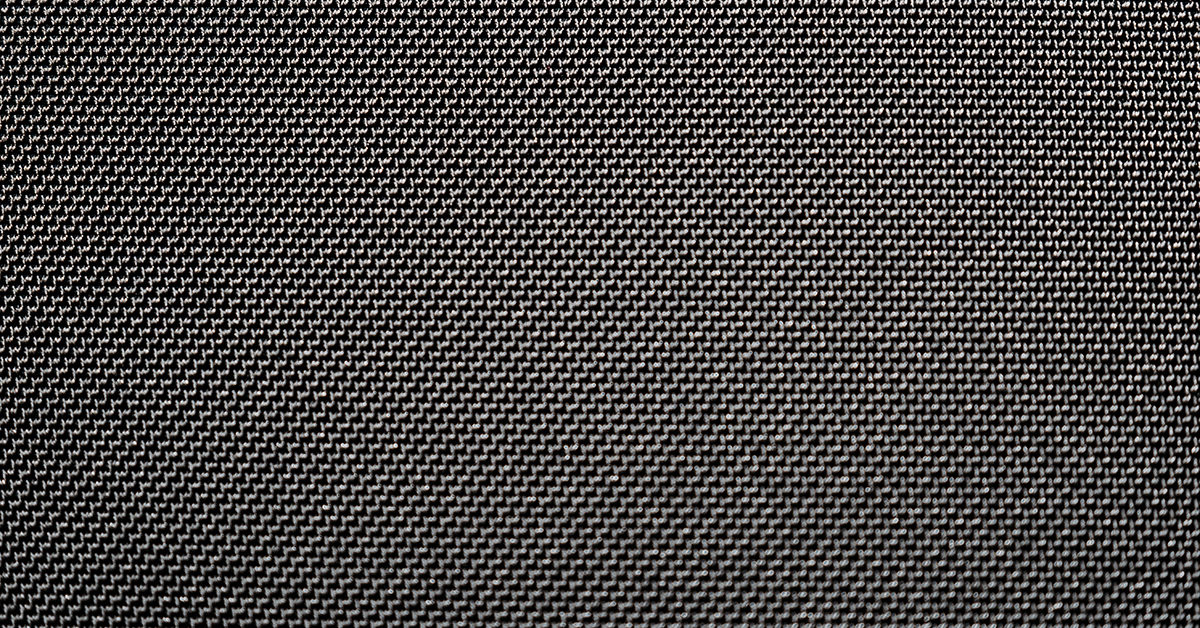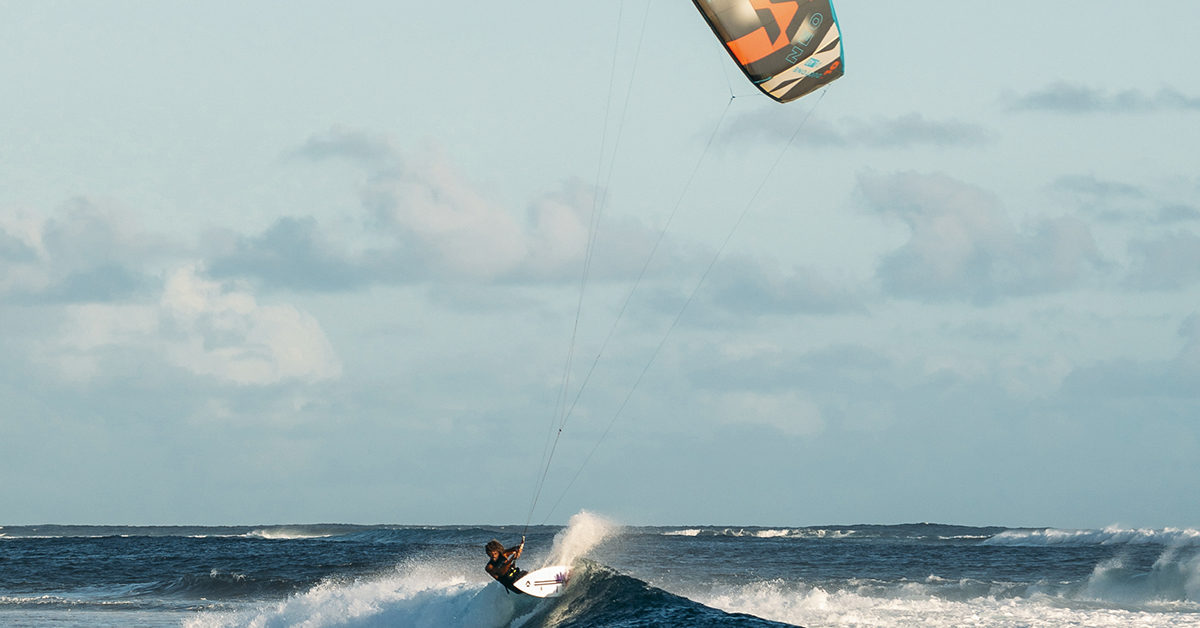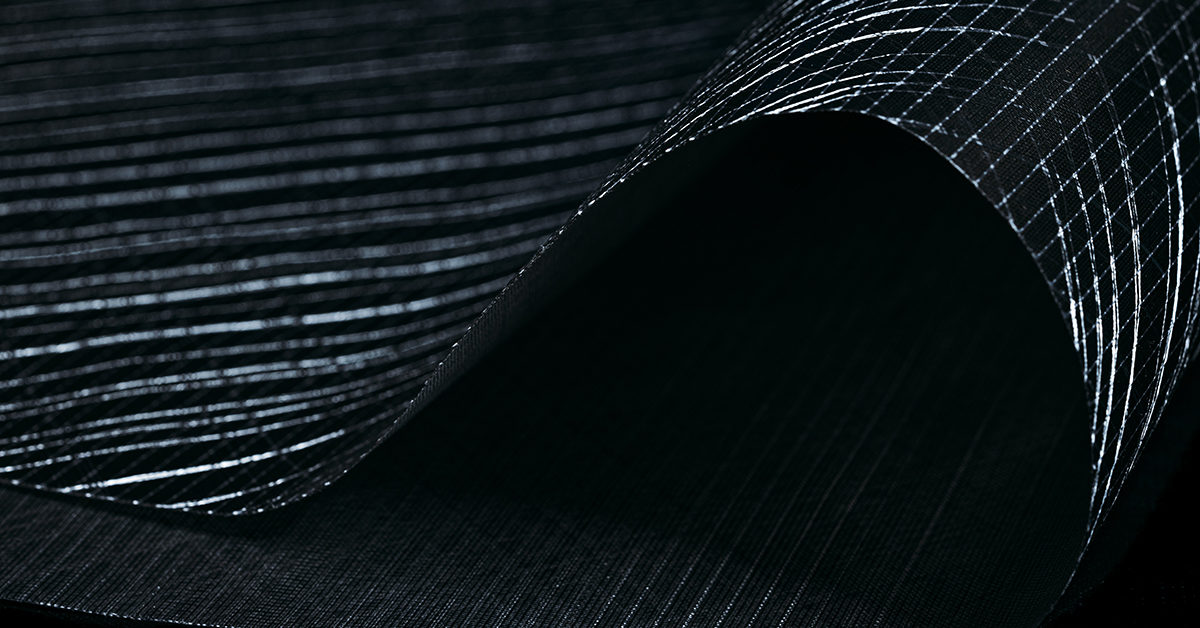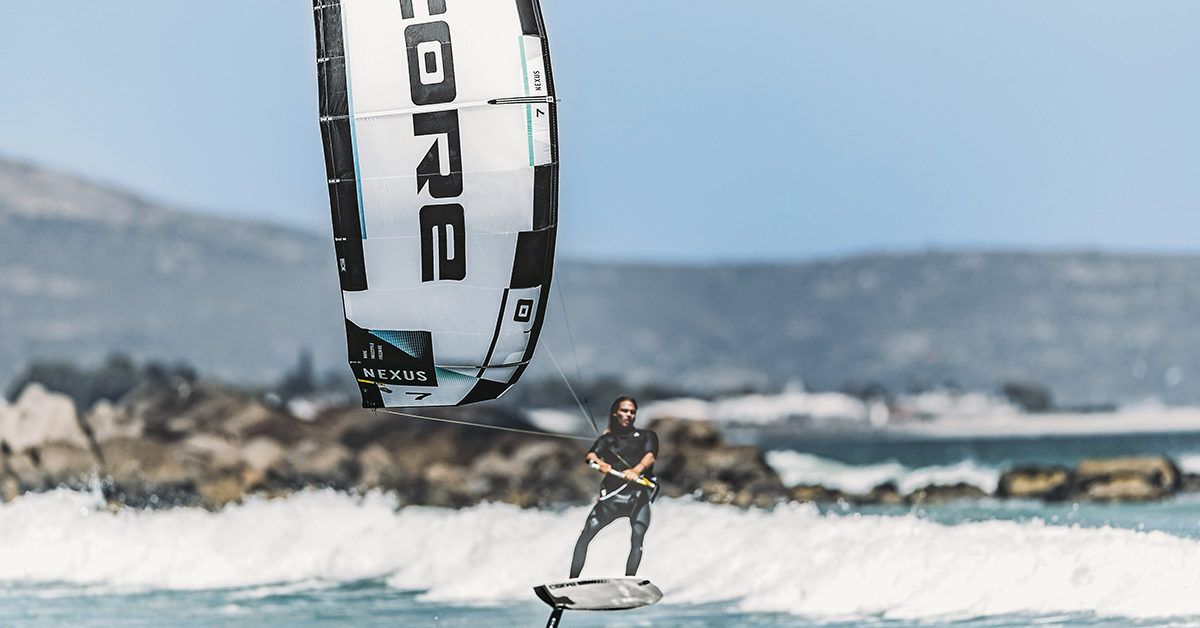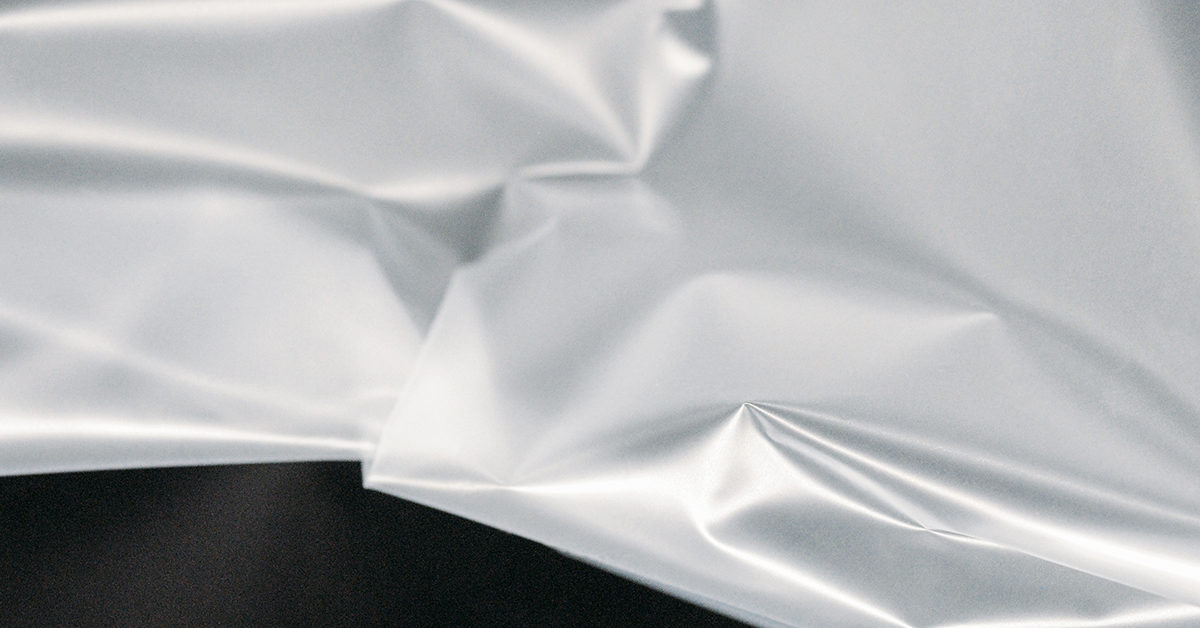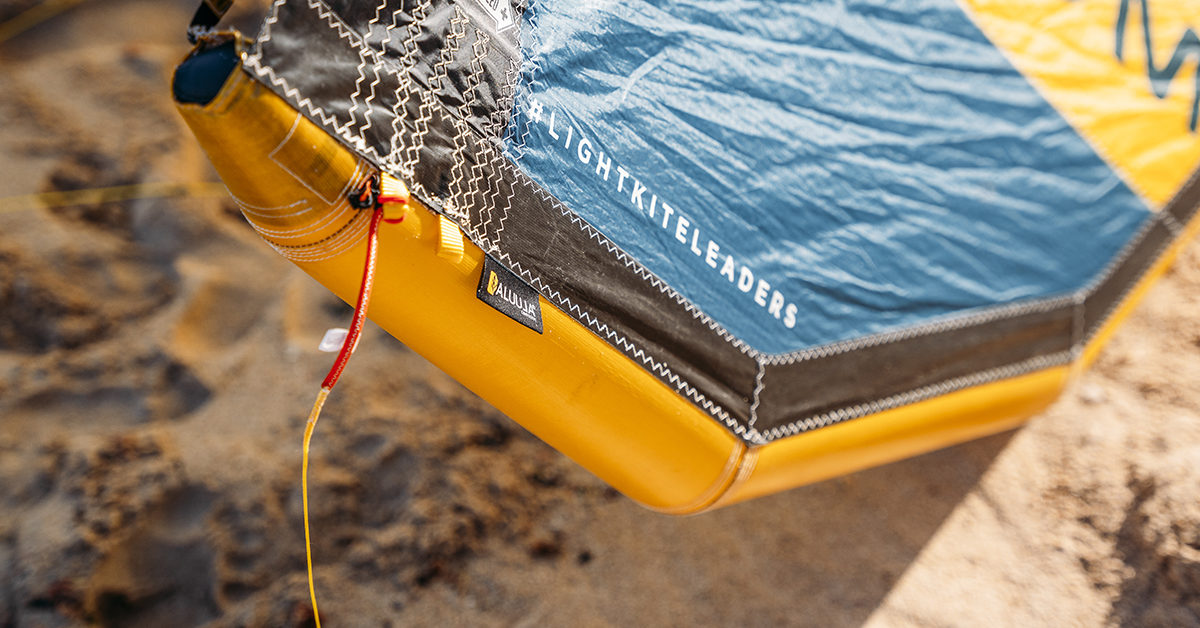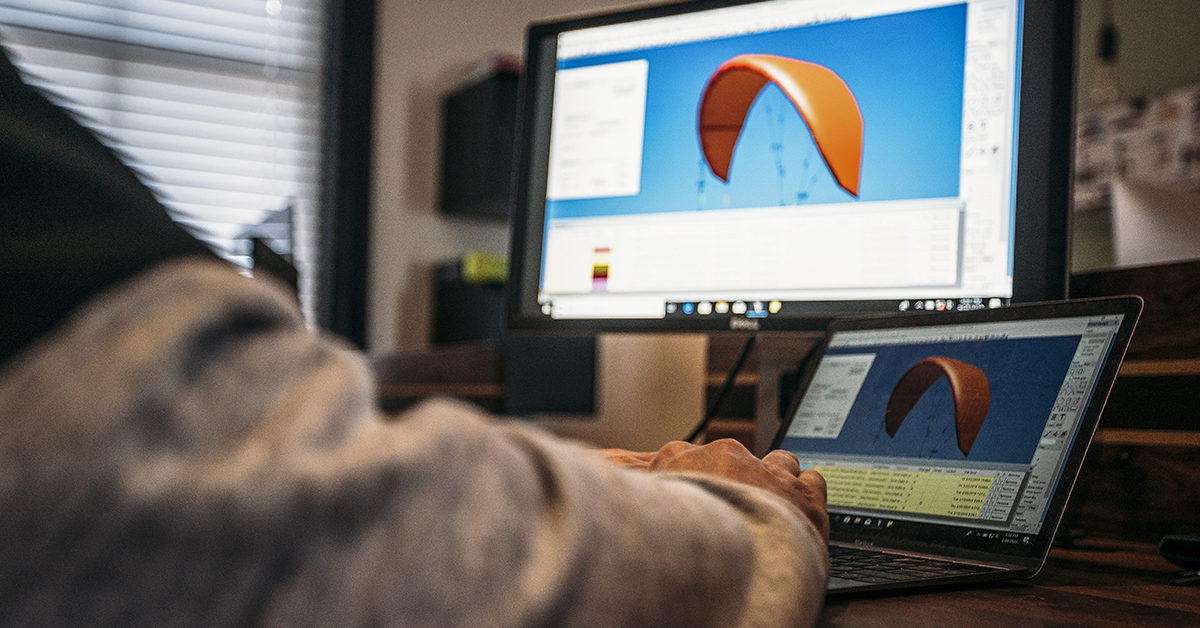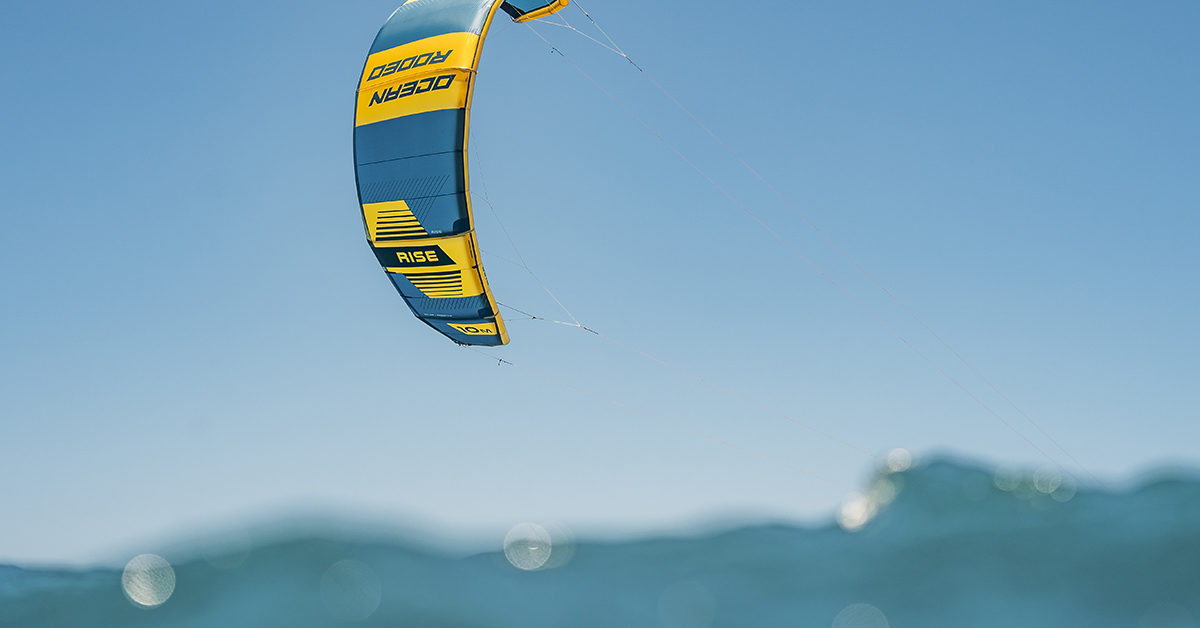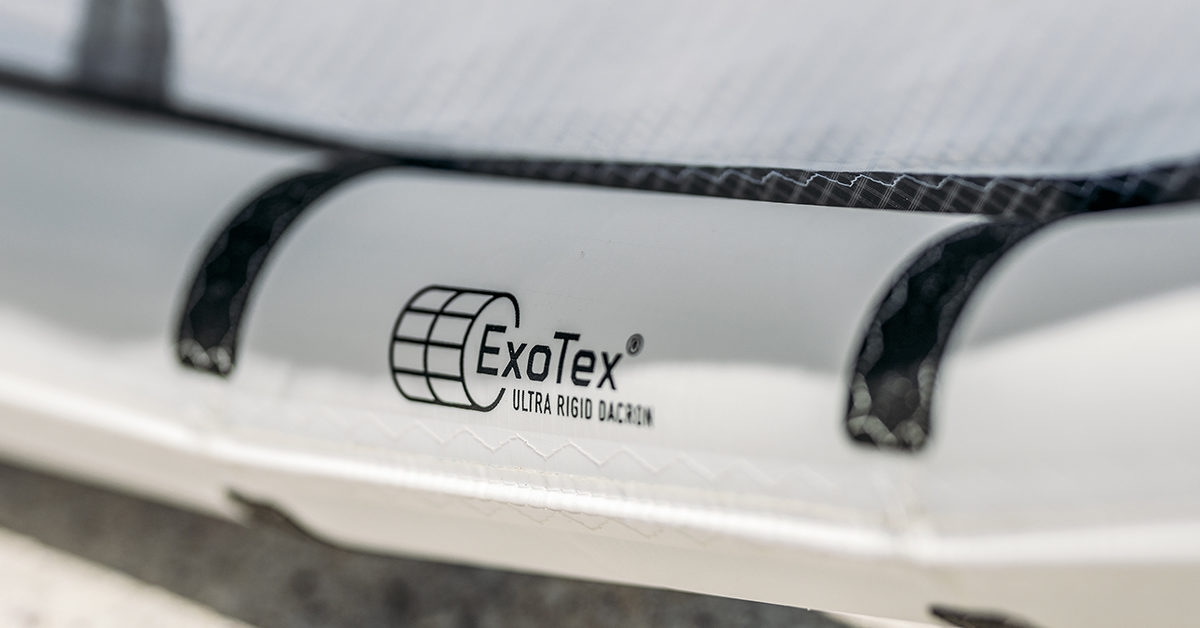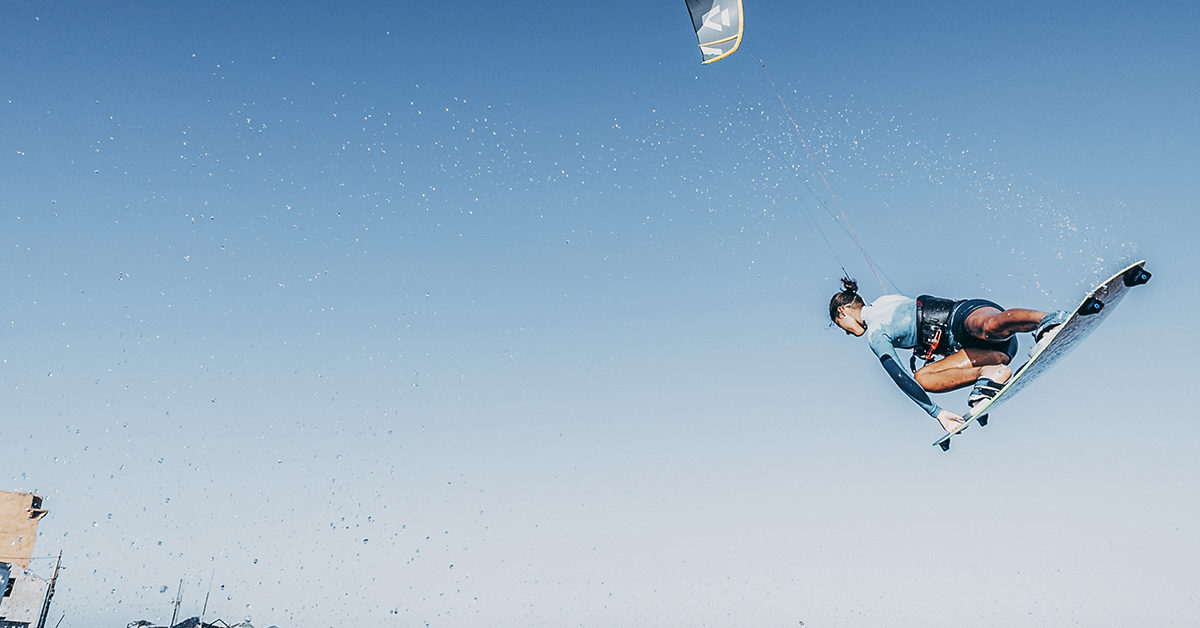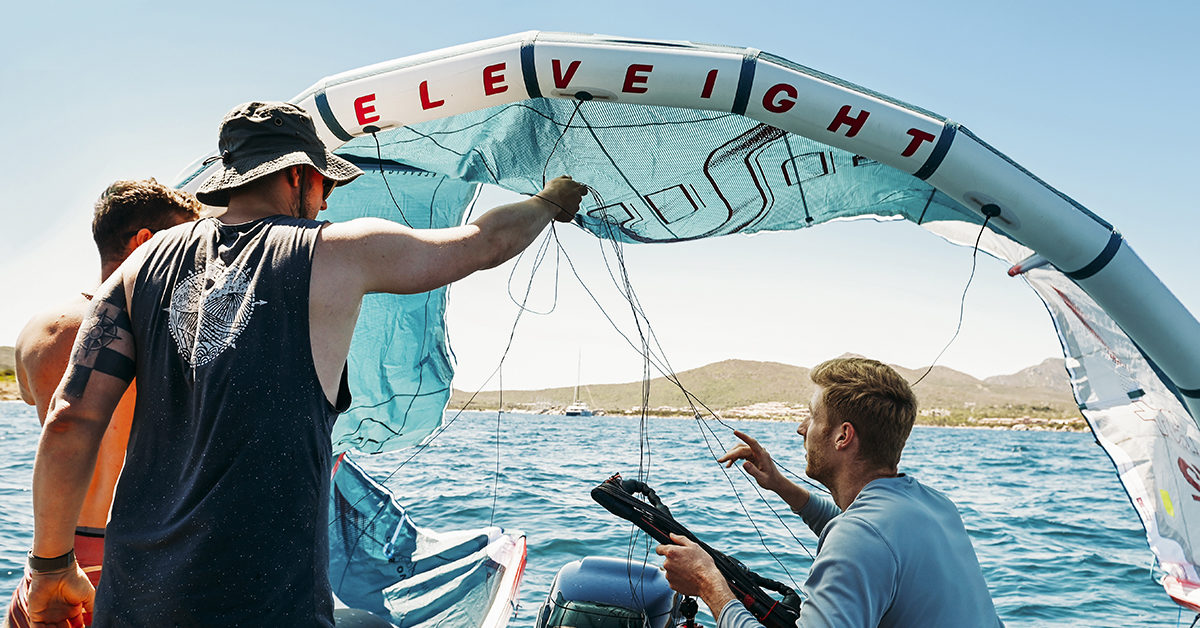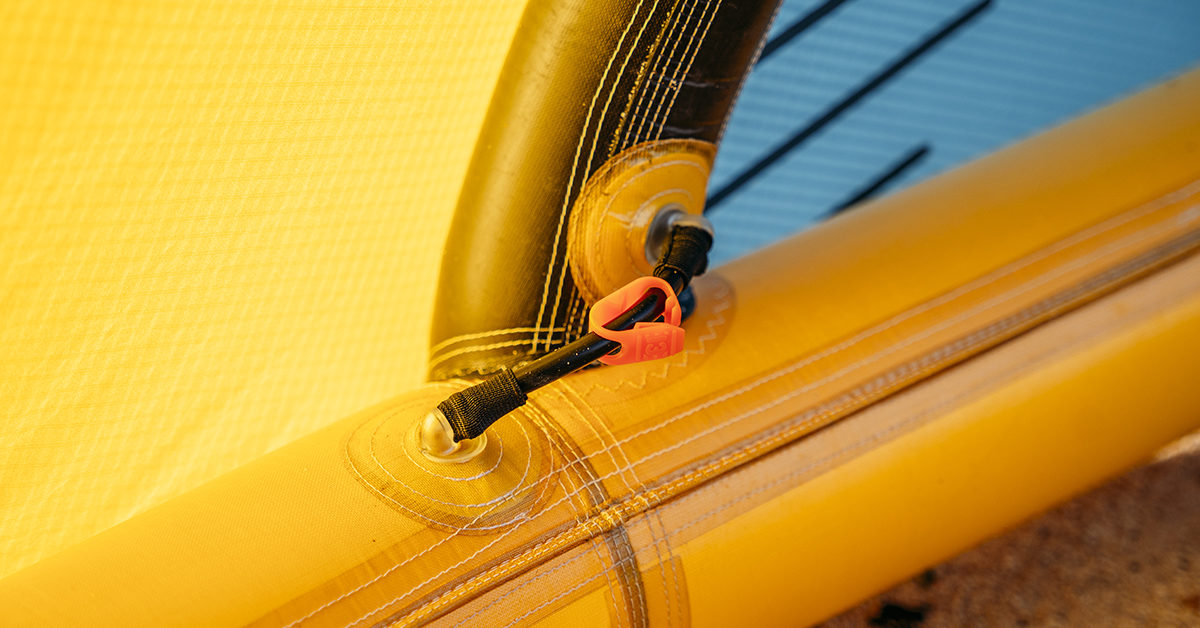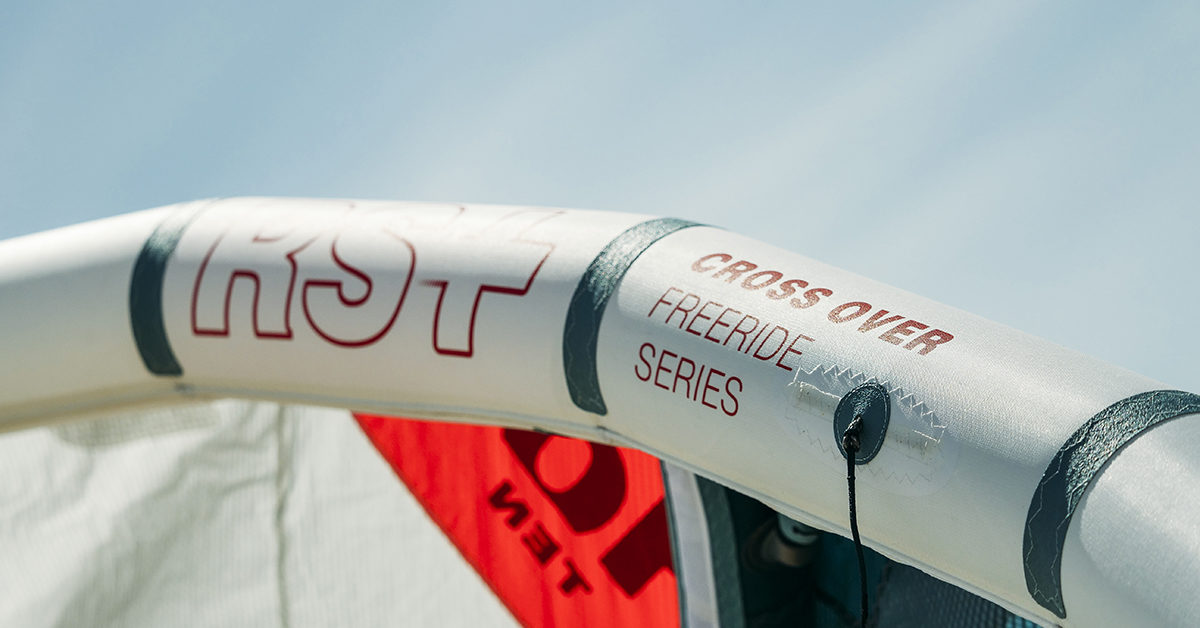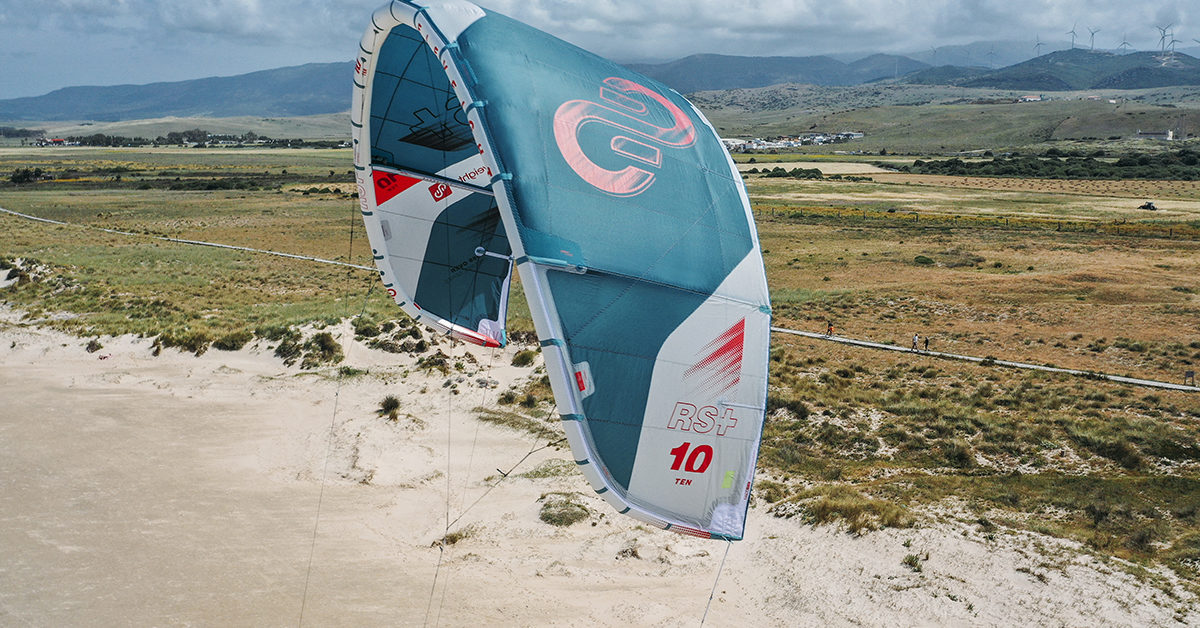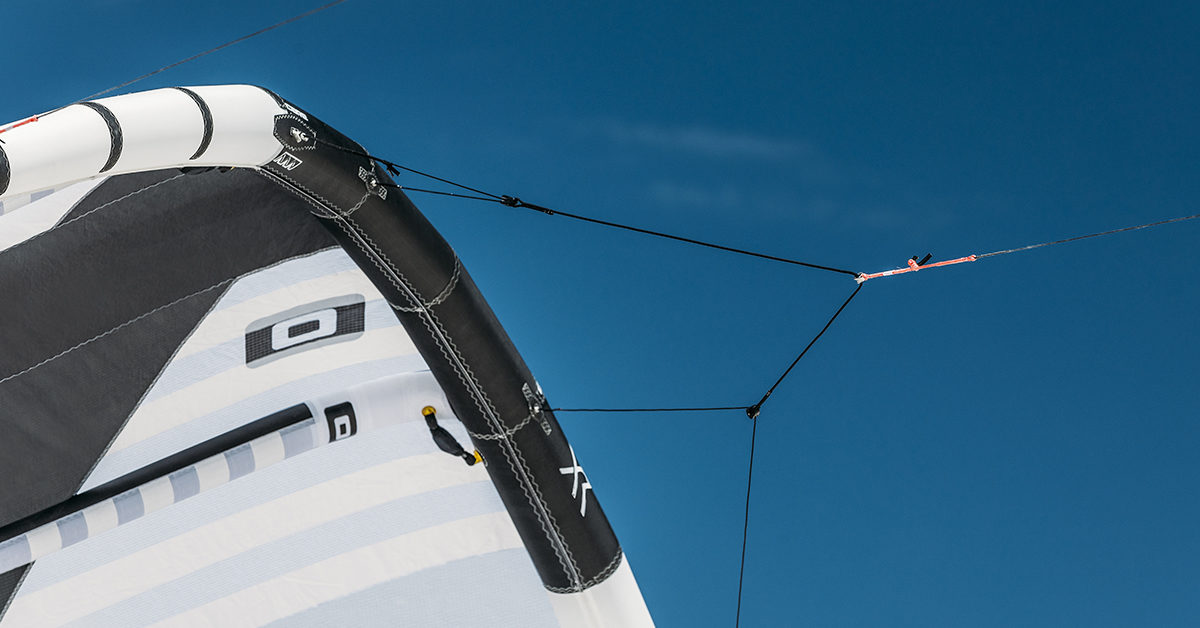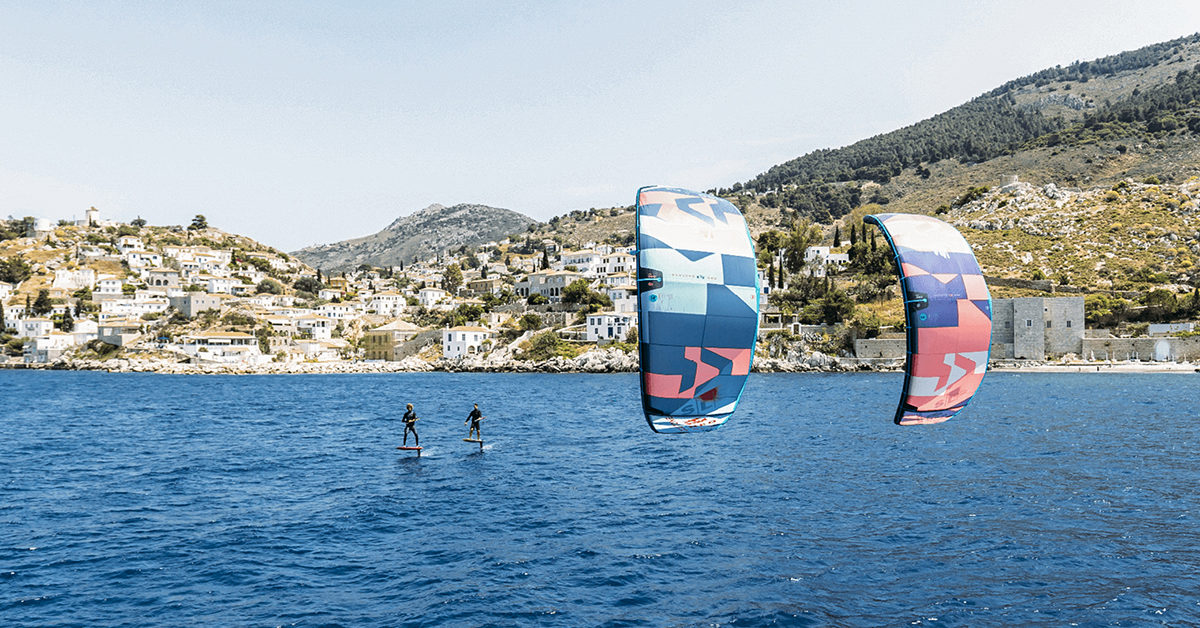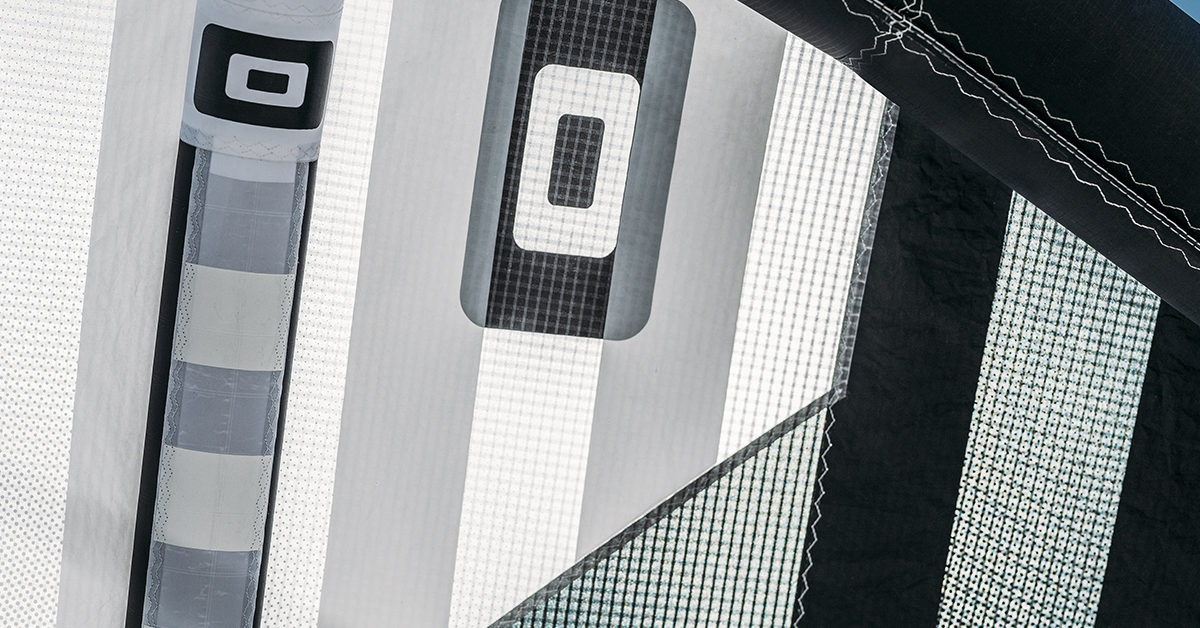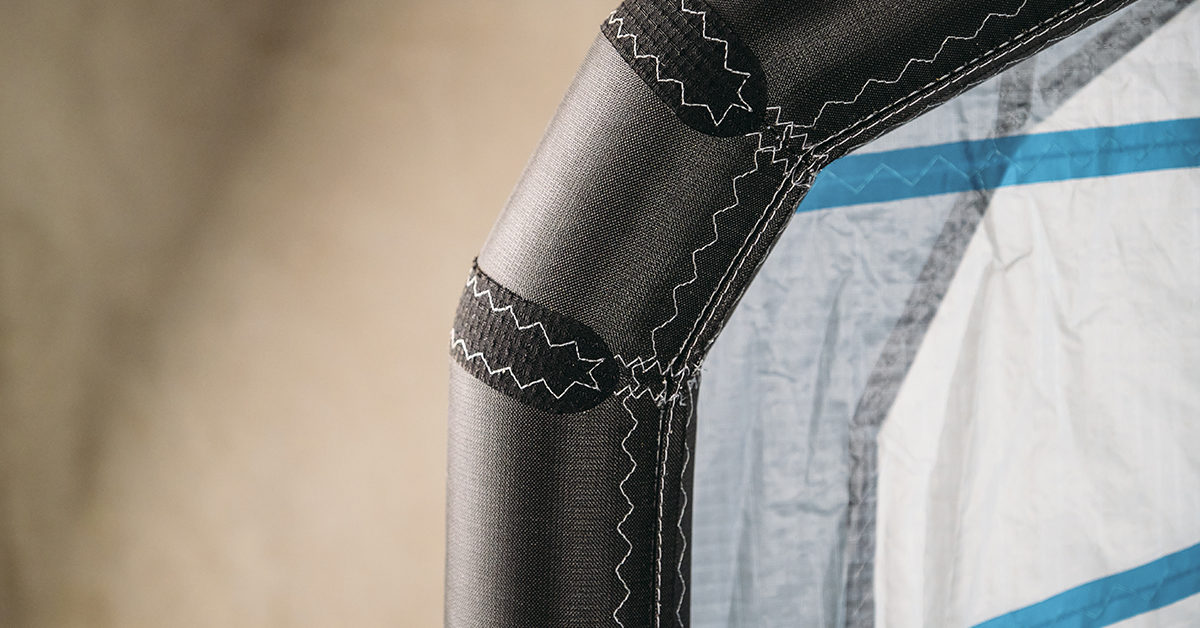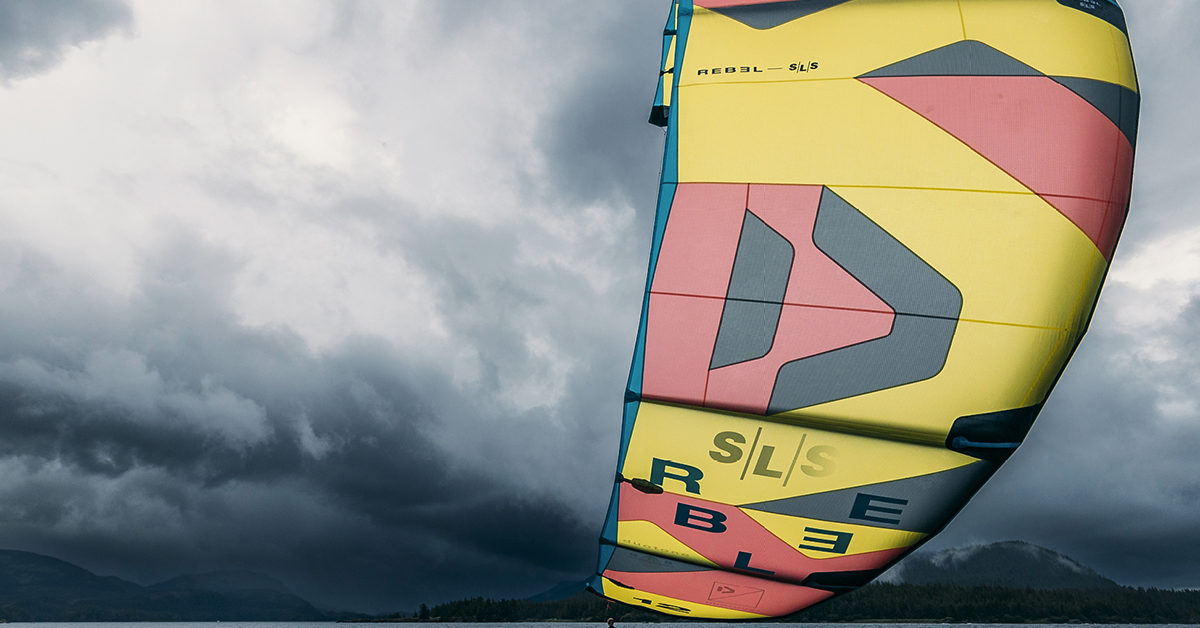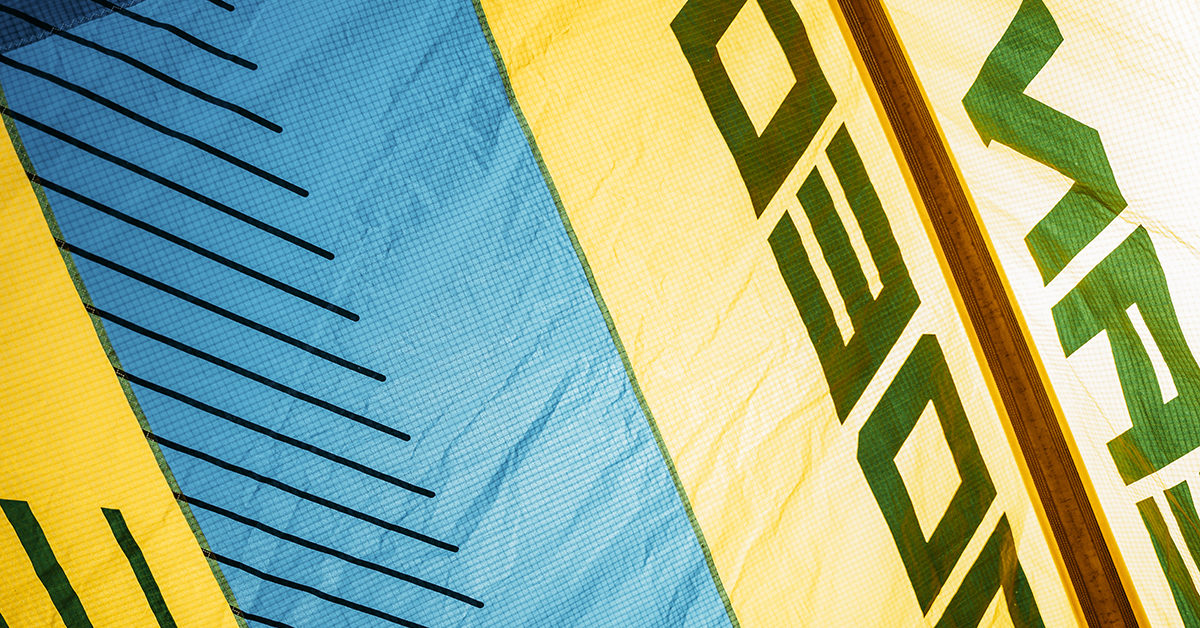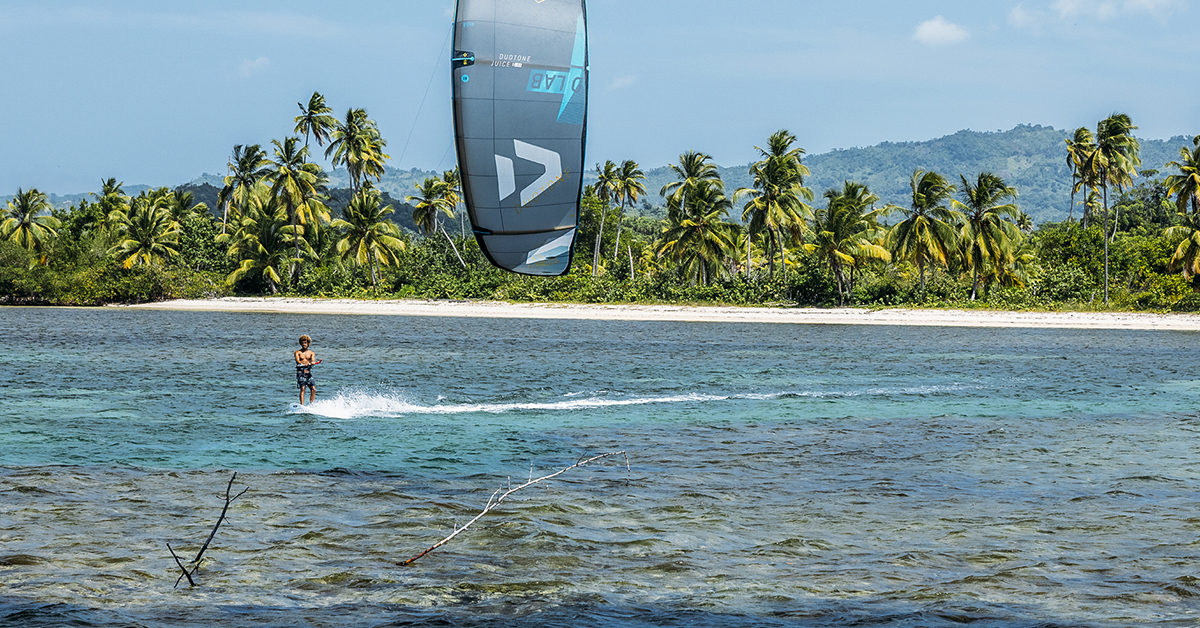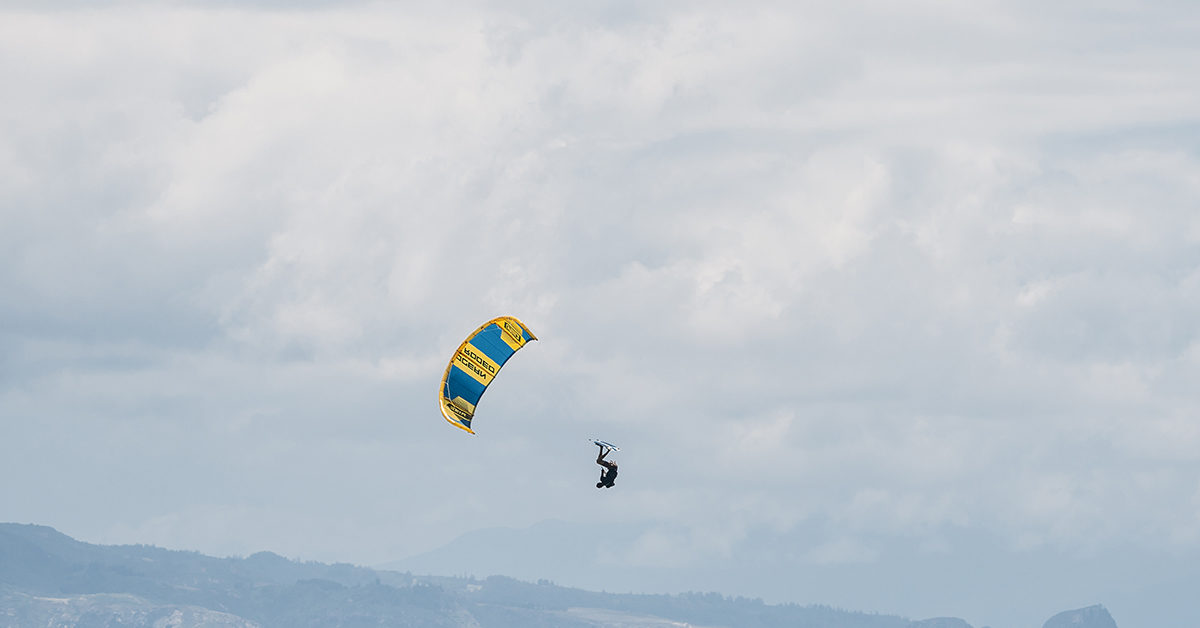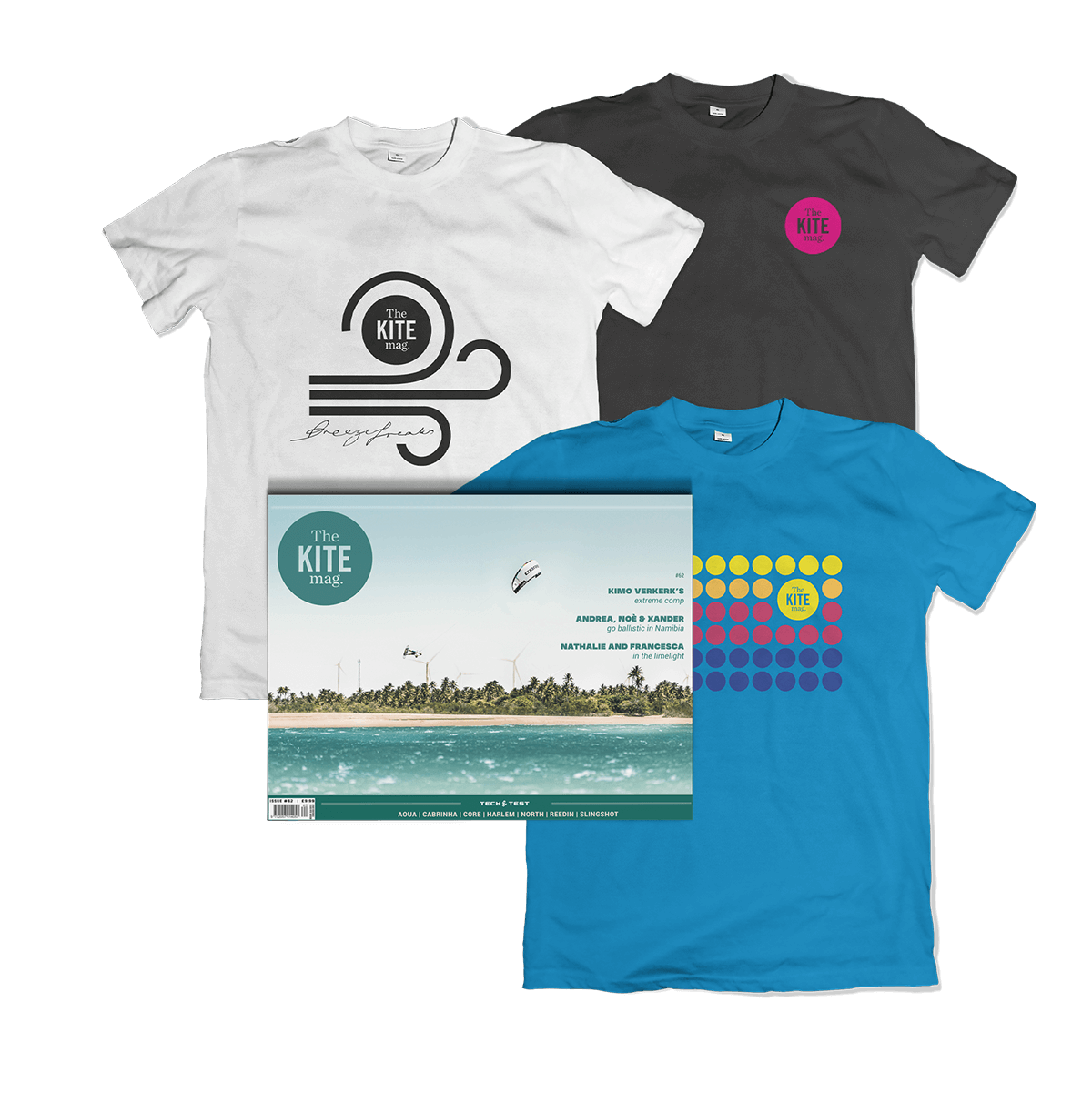Which ‘new’ materials can we find within your kite range?
Duotone: For the last few years, we’ve been progressing with different kite materials. Everything has really started with lighter materials like Penta TX, and today we have a range of three segments: Originals, SLS and D/LAB. The Original features standard materials, SLS uses Penta TX, and D/LAB uses ALUULA material. The journey is all about creating products with better flying ability, especially in reducing the overall weight of the kite, which of course helps to increase the lightwind abilities. A big step in this direction were the SLS models with Penta TX, and ultimately progressing to the D/LAB models with ALUULA, currently the lightest inflatable material on the market. The Juice D/LAB, which is built with ALUULA, is the benchmark in lightwind kiting, especially in twintip riding. The development process started years ago, but now is finally in full swing.
Airush: The key one for us over the last year, is the Ho’okipa leading edge fabric. This concept has been in development in some form for the last six years and it has been really exciting to get our Team Series Kites to the next level. We have always been focused on chasing light weight and durability through innovations such as the load frame, and this is the next big step for us. Looking at the journey through development into production, a key point that many people do not see, is the timelines required to develop these materials – we need at least 18 months to bring any single material formulation from concept, through to testing, into limited production, then full production.
Our original belief was that the current Dacron material (Woven polyester) was on its engineering limit and we wanted to be able to builds kites that were more durable than existing ones, lighter weight and could run at higher pressures. The real limitation is the polyester fibers, although these are a very proven technology and widely used, we knew we would need to move to more exotic fibers to progress. We believed the best substitute was some form of Ultra PE (UHMWPE) as this has key mechanical advantage over polyester, is UV stable and still relatively affordable. This is the base material we use in our load frame and is widely used in flying lines.
We started with a company called Dyneema Corp as they had continued the development of a laminate that was originally Cuben Fiber; it had been used in some early kites, although there had been challenges with the original fabric. We considered that through the ongoing development, these issues may have been addressed. However, we ran into two challenges, to do with seam construction, consistency of fiber within the laminate, and with shrinkage. We then moved to an alternate laminate supplier that had been doing more work within the kite arena, and while this was in long-term development, we continued our research into development options and started working more closely with Challenge Sailcloth.
This was a critical point, as there had always been reservations within our design and manufacture team about using a primarily laminated fabric, but lightweight woven composites did not really exist in commercial applications. Challenge Sailcloth were the first supplier we had found who were able to develop woven composite that was considerably lighter than Dacron in a commercial application. They also had a lot of experience of fine-tuning the fabric formulation as they have worked with key companies in the kite industry and were open to the constant improvement required to really innovate.
Ocean Rodeo: We’ve been tinkering on a list of composites for about five years, and will feature the following new ALUULA Composites in our 2023 products alongside ALUULA Gold. Firstly, ALUULA Graflyte for kite struts and wing air frames, which is very light and strong, has responsive flex, and is ideal for air frame sections where we want more flexibility. Secondly, ALUULA Graflyte X for leading edge sections that need less flex. It is similar to the Graflyte but with more stiffness. Thirdly, ALUULA Aeris X, an extremely tear-resistant canopy for wings which will be made in several weights and variations.
Lastly, we will have ALUULA Atom, a new bladder film and bladder design. The new bladders are half the weight of traditional PU bladder films and three times more resistant to UV. UV can get through some of the new ultra-light composite air frames so bladders also need protection. The Atom bladders are flex rated – an industry first – and work in harmony with the airframe design. Stiffness of the strut is increased by 55% when inflated to the recommended PSI. Incidentally all of these new composites are recyclable.
ALUULA works closely with several leading brands to test the new composites, which are produced in Victoria, BC, Canada. We expect these new composites will eventually be used by other high-performance brands.
CORE: All our recent models come with the new CoreTex 2 and ExoTex 2 materials, both exclusively developed for CORE in Japan and Taiwan. CoreTex 2, our latest canopy cloth, is not only lighter than its predecessor but also comes with massively improved stiffness, and durability. A new coating process aids stability in higher winds and jumps. CoreTex 2.0 sets the standard in breaking strength, tear resistance, longevity, UV protection, and elongation. We’re also proud to have recently released our brand new ExoTex 2 leading edge that’ s stiffer, lighter and yet also 80% more tear resistant. ExoTex 2 is a considered and progressive evolution of polyester weaves through both the warp and weft. Through every inch of our air frames you’ll find the use of ultra-strong yarns, and the entire structure is now stiffer, more tightly woven and then finally treated with a unique heating and shrinking process.
Eleveight: At Eleveight we have a development process that’s very driven by performance and technology. We are constantly testing new materials, and in the last few years one of our main focuses has been the development of a new material for the inflatable structure. Our driving force behind the development is kite designer and founder, Peter Stiewe. With over 20 years of experience, Peter has extensive knowledge about different materials and the related performance outcome. Utilizing his experience, we introduced our XT Light fabric into our foil/freeride kite, the OS. The performance outcome for the product was great and yet we keep researching for further enhanced alternatives for future editions.
Unfortunately, the pandemic caused some delays in the ability to conduct research, which also changed the timeline of new developments. However, this year we managed to introduce a new material into our RS+ kite: Dynea Tex, which is a highly specialized fabric engineered using Dyneema fibers which we use for the leading edge on the RS+ model. Dynea Tex is 30% lighter and stronger than normal inflatable materials, but more importantly, it has an increase in flying performance. The RS+ is lighter in weight, more dynamic and extremely responsive. Dynea Tex is an exclusive development for Eleveight and we work in close conjunction with our new supplier in Asia to reach the best performance outcome.
